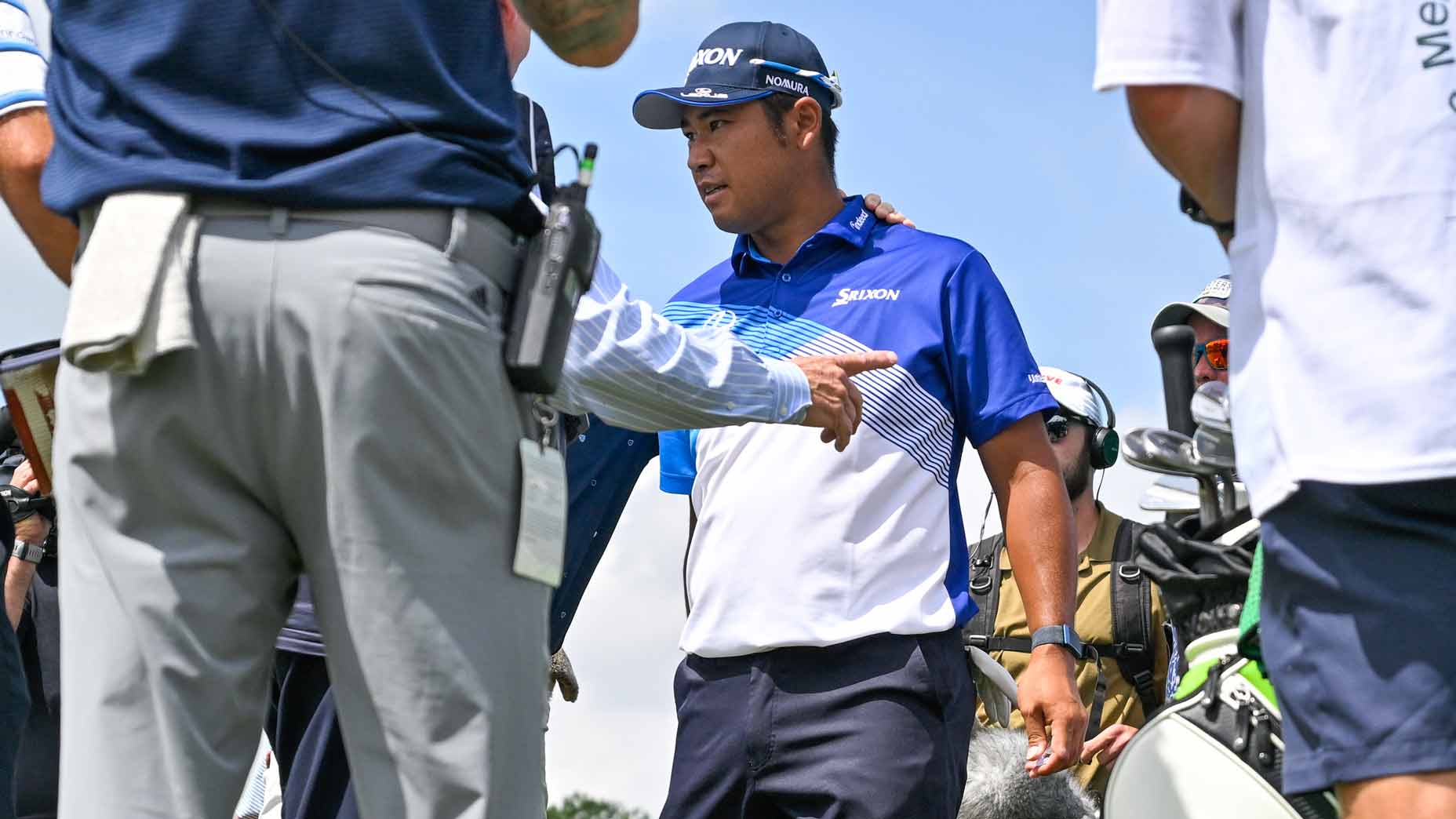In a shocking sequence of events on Thursday at the Memorial Tournament, Hideki Matsuyama was disqualified for having a foreign substance on the face of his 3-wood directly around the middle of the hitting area.
Paint in the grooves of a fairway wood — or any club, for that matter — isn’t grounds for disqualification. But since the paint substance could be felt above the face and out of the grooves of the club it was deemed non-conforming, and as per the rules, he was disqualified when he used the club in competition.
(You can read our in-depth breakdown of the rules situation here.)
As with many rules in golf, this raised questions about where the line between legal and illegal actually begins. In the case of marking up the face of your club head, when does paint or marker go from simply being a visual aid on the face to something that could get you DQ’d? Let’s dive in.
Why change the paint on a club face?
From driver down to fairway woods, you will often hear players refer to how a club sits in the address position: open, square or closed. They’re referring to the direction the face is pointing when set behind the ball. In most cases, PGA Tour players prefer to have a face that looks square or slightly open to give them confidence in their desired shot shape.
Visual alignment cues play a big role in how any individual player will aim the club behind the ball. Most people are familiar with putter alignment, but it’s just as important for the longest clubs in the bag. Golfers and equipment companies have been trying to figure out how to get aim right for years.
Ping used what looked like racing stripes to help golfers with alignment on the i25 driver back in 2014.
Since then most equipment manufacturers have stuck to simple alignments on crowns and focused on creating face patterns to help contrast the club face from the top line (where the paint meets the face). A more modern example comes from Titleist and the etching pattern on their TSi Series line of woods, which focuses a player’s attention on the middle of the face.
Also, TaylorMade’s Stealth fairway woods come with a laser-etched alignment along the topline to contrast the black top from the face for easy alignment.
All of these visual face cues, whether applied through an etching process or by painting grooves, are only intended to aid with alignment and offer zero performance advantage.
Who else has changed their clubs?
Although this is likely one of the first times the golfing public has had any interest in what is used to paint the face of a golf club, there are a number of examples of PGA Tour players modifying the visual aspects of a club for personal preference.
Collin Morikawa: Before switching to the new TaylorMade Stealth Plus driver, Collin used a sharpie marker to black out the center circle of his TaylorMade SIM as a way to reduce distraction.
Keith Mitchell: Similar to Morikawa, Mizuno staffer Keith Mitchell used a sharpie marker to black out the grooves of his ST190 for a quieter look from address. Mizuno designers must have taken this preference to heart, because in driver models since the face marking has been much more subdued.
Charley Hoffman: Unlike the above examples and before the release of the aforementioned TSi Series driver, Hoffman drew a vertical line in the middle of his TS3 driver face using a metallic color marker to improve his address alignment.
Try it yourself
To review, anything that can’t be felt beyond the texture of the face is considered legal. Permanent marker, like a Sharpie or Tiger’s preferred option, the Milwaukee Inkzall, has no affect on the performance of the club. So if you’re looking to improve your alignment or reduce distraction, marking up your club could be your ticket to finding more fairways.
Just be careful when you do.
